The centuries-old capital Hanoi always offers visitors a wide variety of authentic items that contain the city’s traditional quintessence so that they can buy them as souvenirs or collectibles. Sometimes, too many kinds of products overwhelm the tourists and lead them to a situation that they don’t know which item they should choose and buy. Below are some small suggestions for foreigners who may not currently come up with interesting ideas for shopping in Hanoi.
Silk and Embroidery/ Designer Boutiques
Tourists cannot miss authentic traditional silk when visiting Vietnam. There are some differences in the way locals make silk in each region of Vietnam but the Van Phuc village in Hanoi has been renowned for making the best silk in the country. You can buy draw silk, print silk or patterned silk with national decorations as a unique gift for friend and families. Moreover, you can also go to tailored clothing stores to select silk and other fabrics and request customized outfits based on your preferences at reasonable prices. Hanoi’s tailors are well-known for their craftsmanship, elaboration and speed in making and altering clothes. There are many high-quality silk stores and designer boutiques located in the Old Quarter. My recommended store is Anh Village Silk Tailoring on 2 Hang Be St., one of the most popular tailor stores in the Old Quarter and has received many positive feedbacks from international customers on TripAdvisor.
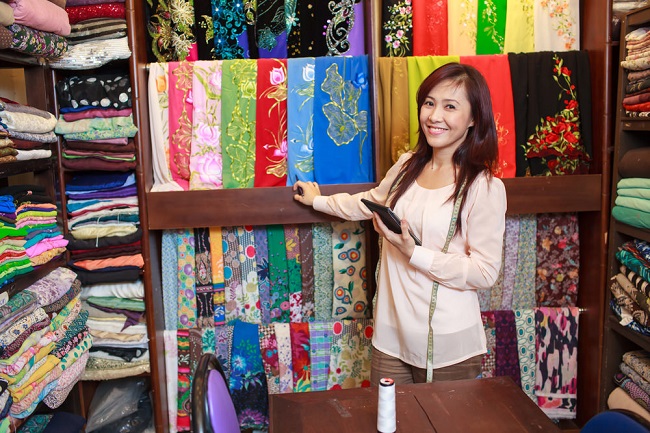
Handicrafts
Handicrafts in Hanoi varies from lacquer ware, mother-of-pearl inlaid furniture, ceramics, sandalwood statuettes, watercolours, oil paintings, prints and assorted antiques (real and imitation). These products are usually designed and produced by locals and have stunning quality. The prices are also very affordable, typically ranging from $3-$7 for simple items. Collective Memory and An Store (dẫn link đến bài này) are two hidden gems in terms of hand-made items and local gifts in Hanoi. In here, you not only come to buy products but also can immerse yourself in the unique stories behind each item and expand your knowledge of Vietnamese history and culture.
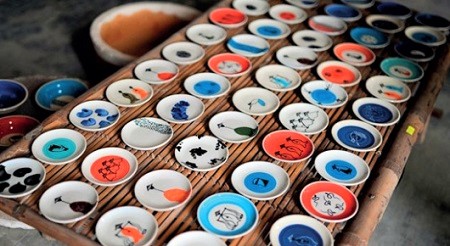
Ethnic Minority Products
Excluding the dominant Kinh people, Vietnam is home for 53 ethnic groups scattering mostly in the Northern mountains region in Vietnam and each group has its own costume with distinctive designs. In this day and age, both handicrafts and clothes with unique decorations and special weaving from various ethnic groups are widely sold in souvenirs shops of Hanoi capital. If you are expecting to not only purchase antiques containing distinctive patterns of ethnic groups but to also learn more about their art and culture, 54 Traditions Gallery (link den bai nay) on 30 Hang Bun St. is a perfect choice for you. Most of the stuff here are very authentic, unique yet affordable. Moreover, the owner is very welcoming and willing to give you a free tour of the entire gallery and explain the story behind each beautiful artifact in his collection.

Artworks/ Paintings
Paintings are one of the most signature items to buy when visiting in Hanoi as the capital’s traditional values and spirit can be all exposed within a soulful painting. Hanoi offers an array of art galleries for you to choose and purchase paintings from, ranging from commercial ones and copies for the masses to expensive high-end artworks, where you might pick up an original $5,000-piece from one of Vietnamese talented artists. The most popular galleries in Hanoi are mostly located in the Old Quarter, namely Apricot Gallery (40B Hang Bong), Thang Long Art Gallery (41 Hang Gai), Tired City (3 Hang Bong), etc. For more details, please refer to the six must-visit art galleries in Hanoi.
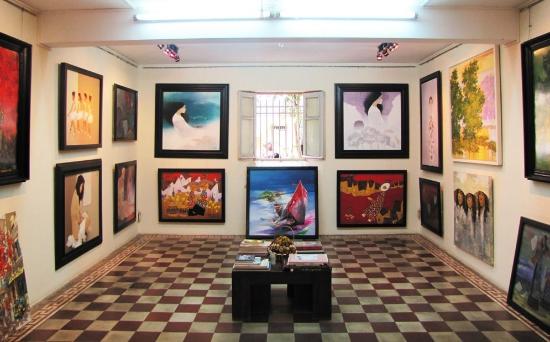
“Do” paper
Do paper is made from the bark of the Do tree, a wild plant commonly found around local riverbanks. It was in popularity for many years before the modern paper production these days has been invented. Now Do paper is only used to make Hanoi’s ethnic greetings cards, water colour, folk paintings and bamboo-bound notebooks. Do paper cards with embroidered squares cost more or less $2, bamboo bound notebooks are from $1.50 and hemp covered notebooks from $2. You can purchase Do paper related products in Hang Gai or Hang Bac Street in Ha Noi.
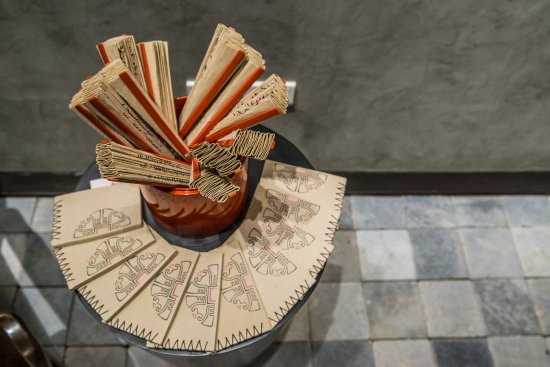
Vietnamese’s black coffee
Coffee has been introduced to Vietnam as late in the 19th Century by a French Catholic priest. Nowadays, the caffeine-charged drink is an integral part of Vietnamese culture. Love for Vietnamese black coffee is an acquired taste. Many tourists and short-term visitors don’t like it at first. It takes more than a few sips to get used to the strong bitter taste of Black Coffee, but once you fall in love with Vietnamese coffee it gets quite addictive. Coffee in Vietnam is omnipresent. Coffee shops of various kinds are everywhere. However, if you want to try a real, authentic Vietnamese street coffee, look for a (usually order) woman behind a portable stall with soft drinks on display. Ask her for one cup of coffee for takeaway and for sure she will prepare for you one. Or if you wish to buy raw black coffee beans and bring them home, please refer to best places to get good coffee grounds/beans in Hanoi.
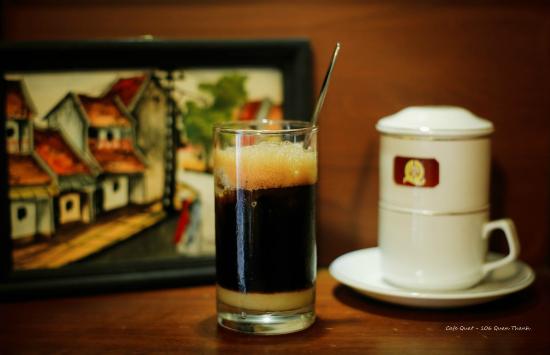
Other useful tips:
In most cases, you can negotiate the price off 10-40% from the items’ quoted price. Nonetheless, please be noted that a vigilant bargain hunters are always polite and friendly with a ready smile even though the bargain is not going onto an expected direction.
It is better to shop around the Old Quarter first to collect and compare the prices from different shops and then select your most-interested items since browsing does not necessarily mean buying.


 en
en TIẾNG VIỆT
TIẾNG VIỆT